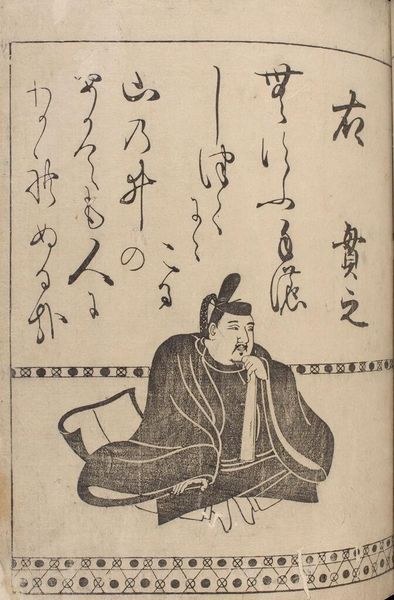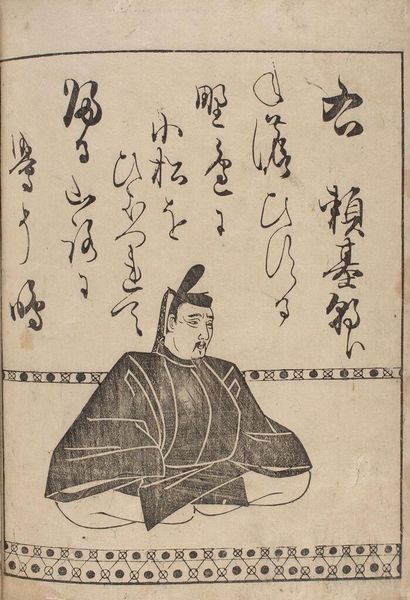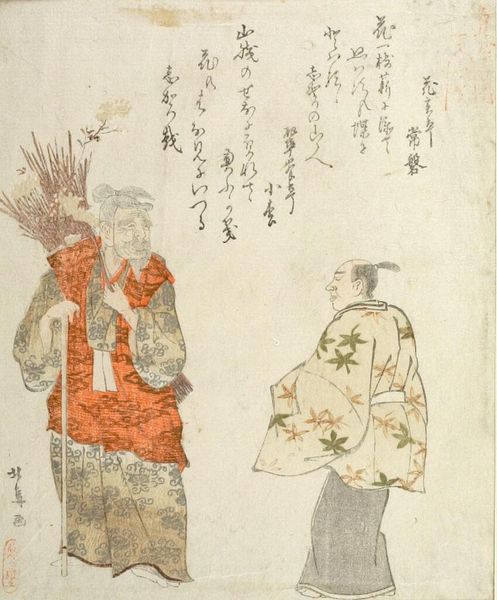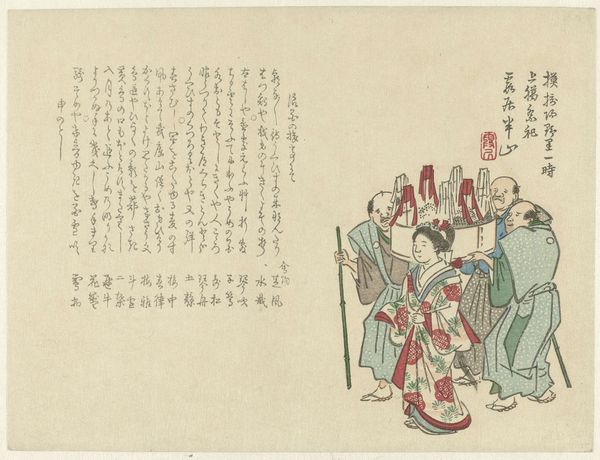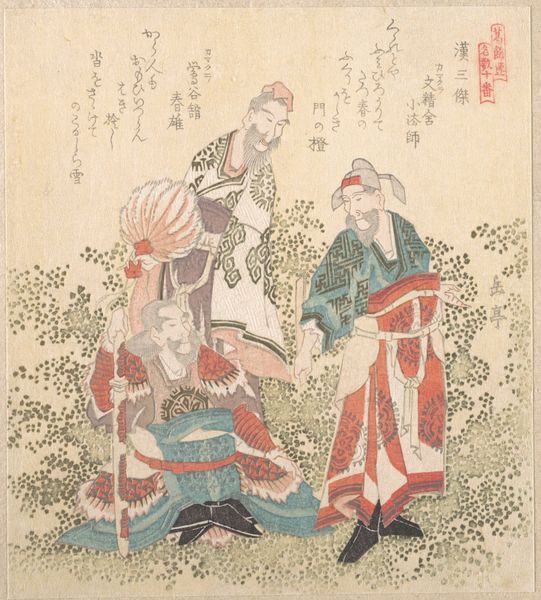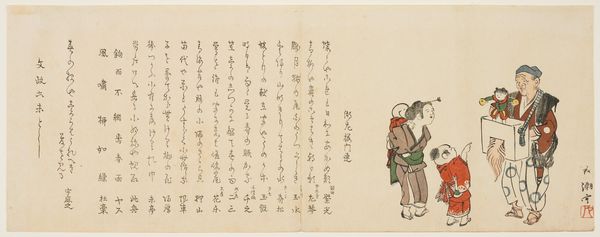
print, woodblock-print
#
portrait
# print
#
caricature
#
asian-art
#
ukiyo-e
#
figuration
#
woodblock-print
#
orientalism
Dimensions: height 376 mm, width 247 mm
Copyright: Rijks Museum: Open Domain
Editor: This woodblock print, "Het land van kleine mensen" or "The Land of Little People" by Utagawa Yoshitora, was made around 1863-1865. It’s striking, but I'm a little unsure what to make of the contrast between the large figure and the much smaller ones. How do you interpret this work? Curator: Considering its materiality, it’s crucial to think about this print's production. Woodblock printing was a process involving many skilled artisans – carvers, printers, publishers. Understanding this division of labor helps unpack its social context. The subject also points to global commodity exchange. Editor: How so? Curator: Note the Western figure. His clothing and bearing suggest foreign influence, but distorted. What kind of exchange, both artistic and material, made this image possible? Editor: You're saying the very materials and techniques used to create this print tell a story about trade and cultural exchange. I never considered how the choice of the woodblock medium might itself carry meaning about production! Curator: Exactly. Consider also the consumption of such prints. They weren’t "high art," but a mass-produced item. This image reflects a specific moment of encountering the West, processed through Japanese labor and consumption patterns. Think about who this print was *for*. How does that shift your perspective? Editor: It certainly does. I guess I had this impression that because it's in a museum, it should be viewed a certain way, but that ignores the print's original context as a commercial object made by many hands. Thanks for shedding light on those less obvious aspects! Curator: Absolutely! Seeing art through a materialist lens enriches our understanding by emphasizing production, consumption, and the social forces at play.
Comments
No comments
Be the first to comment and join the conversation on the ultimate creative platform.



